![]()
![]()
![]()
Use LEFT and RIGHT arrow keys to navigate between flashcards;
Use UP and DOWN arrow keys to flip the card;
H to show hint;
A reads text to speech;
19 Cards in this Set
- Front
- Back
|
Draw the brachail plexus |
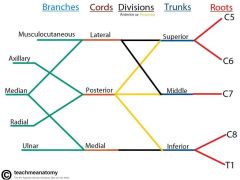
|
|
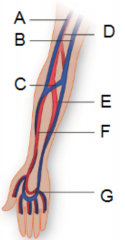
|
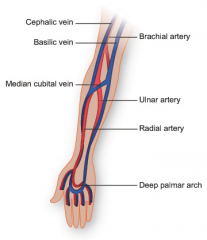
|
|

|

|
|
|
Draw a diagram outlining the divisions of the peripheral nervous system |
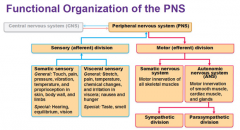
|
|
|
Where do sensory somatic nerve impulses travels to and from? Where do sensory visceral nerve impulses travels to and from? Where do motor somatic nerve impulses travels to and from? Where do motor visceral nerve impulses travels to and from? |
- fromreceptors in skin, muscle, bones and joints to CNS - mainlyfrom viscera of thoracic and abdominal cavities to CNS - from CNS to skeletal muscles - from CNS toglands, cardiac muscle and smooth muscle |
|
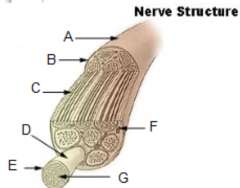
|
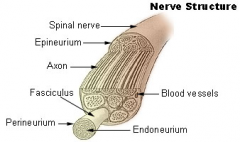
|
|
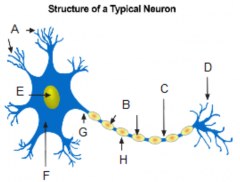
|
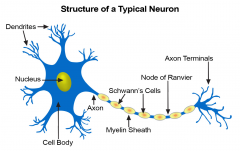
|
|
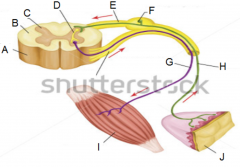
|
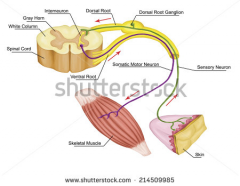
|
|
|
What cell type is the most common origin of Pancoast tumours? |
- squamous - followed by adenocarcinoma |
|
|
In a patient who has a Pancoast tumour and symptoms relating to the arm, which spinal and peripheral nerves are most likely to be affected? |
- T1, possibly C8 - ulnra and radial |
|
|
Why might a patient with a Pancoast tumour have swelling and erythema in their arm? |
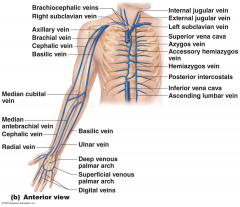
- impingement of the subclavian vein >>> axillary vein >>> basillic vein |
|
|
How is a Pancoast tumour associated with Horner's syndrome? |
- impingement of the sympathetic trunk and stellate ganglion -superior cervical ganglion contains nerves supplying eyes and face>>>> levator palpebrae superioris/superior tarsal muscle(ptosis (drooping eyelid)) and dilator pupillae (miosis (pupilconstriction)) -disruption of sympathetic supply to sweat glands causes ipsilateralanhidrosis |
|
|
What are the triad of symptoms associated with Horner's syndrome? |
- miosis(constricted pupil) - partial ptosis (drooping eyelid) - unilateralanhidrosis (impaired sweating) |
|
|
What is the difference between first, second and third order neurons? |
- firstorder neurons: conductimpulses from receptors of the skin and fromproprioceptors (receptors located in a join, muscle or tendon) to thespinal cord or brain stem,where they synapse with second-orderneurons - second-orderneurons (preganglionic): carriesthe information fromthe central nervous system to the thalamus.Information travelling along second order neurons deccussates fromone side of the CNS to the other side of the CNS - thirdorder neuron (postganglionic): carriessensory information fromthe thalamus to the cerebral cortex |
|
|
How would you diagnose a Pancoast tumour (5)? |
-imaging: CT, MRI and Positron Emission Tomography (PET) (nucleardyes) -x-rays often occluded in early stages by clavicle and first rib
-MRI (+/- angiography) = gold standard -bronchoscopy if suspected invasion into trachea or bronchial cavities -biopsy – confirmation and operability assessment (mandatory fordiagnosis) |
|
|
How would you manage a patient with a Pancoast tumour (3)? |
-assessment of staging (metastises) (vs grading: differentiation) - preoperative irradiation (radiotherapy) -surgery |
|
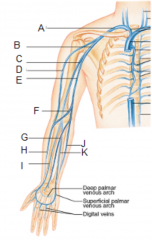
|
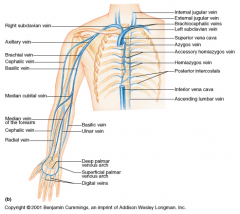
|
|
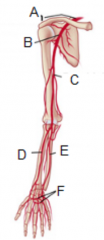
|
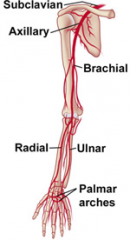
|
|
|
Describe the difference in structure and function between sympathetic and parasympathetic neurons |
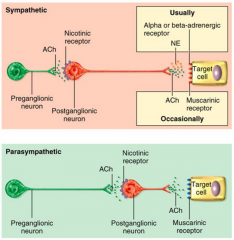
|

